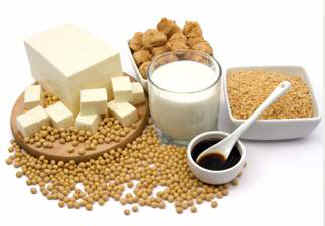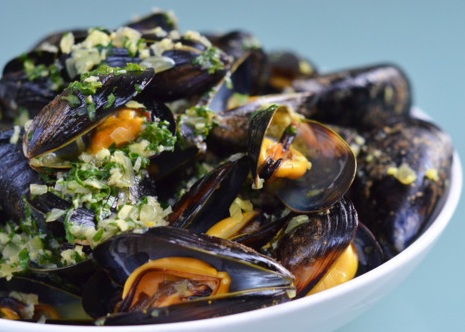Iron is an important mineral for a healthy body. Its deficiency can cause several complications, including anemia. It is important to be on an iron-rich diet, but it is not enough to eat food that contains iron. You also need to take steps to ensure that your body can absorb iron properly. To understand things better, you need to know more about different types of dietary iron. Iron from animal sources (heme iron) is different from iron that you get from plant sources (non-heme iron). Therefore, the food you eat will determine how your body can absorb iron. On average, your body absorbs 15-35% of heme iron and 2-20% of non-heme iron.
What Enhances Iron Absorption?
Here are some foods that not only provide you with more iron but also enhance your body's ability to absorb iron.
1. Beef Liver
 Beef is among the richest sources of iron, and beef liver contains more iron than other parts of the cow. You get about 6.5 mg of iron from a 100 g serving of beef liver. This equals 36% of your recommended daily intake of iron. Try beef liver fried with onions for better results.
Beef is among the richest sources of iron, and beef liver contains more iron than other parts of the cow. You get about 6.5 mg of iron from a 100 g serving of beef liver. This equals 36% of your recommended daily intake of iron. Try beef liver fried with onions for better results.
2. Soy Beans
 Including vegetables in your diet will really help reach your daily intake of iron, and soybeans are just perfect. They provide you with non-heme iron that your body can regulate in a much better way. You get about 9.3 mg of iron from a 250 ml serving of soybeans. This provides you with 52% of your recommended daily intake of iron.
Including vegetables in your diet will really help reach your daily intake of iron, and soybeans are just perfect. They provide you with non-heme iron that your body can regulate in a much better way. You get about 9.3 mg of iron from a 250 ml serving of soybeans. This provides you with 52% of your recommended daily intake of iron.
3. Clams
 Thanks to their sweet flavor, clams provide you with a delicious way to increase your iron intake. You can add baby clams into pasta as well as your salad dishes to get iron and protein. You get 28 mg of iron from 100 g of clams – this provides you with 155% of your recommended daily intake of iron. You can even opt for caned clams to get iron in an easy way.
Thanks to their sweet flavor, clams provide you with a delicious way to increase your iron intake. You can add baby clams into pasta as well as your salad dishes to get iron and protein. You get 28 mg of iron from 100 g of clams – this provides you with 155% of your recommended daily intake of iron. You can even opt for caned clams to get iron in an easy way.
4. Spinach
 Loaded with antioxidants and several nutrients, including iron, leafy greens should always be a part of your diet. Every 85 g serving of spinach provides you with 3 mg of iron, which equals 17% of your recommended daily allowance for iron.
Loaded with antioxidants and several nutrients, including iron, leafy greens should always be a part of your diet. Every 85 g serving of spinach provides you with 3 mg of iron, which equals 17% of your recommended daily allowance for iron.
5. Mussels
 What enhances iron absorption? Mussels do. They provide you with protein as well as iron. You get about 6.7 mg of iron from a 100 g serving of mussels. This provides you with 37% of your recommended daily intake of iron. The good thing is that you can enjoy mussels as a main course or have them as a starter to a dinner. Try to buy and use mussels the same day.
What enhances iron absorption? Mussels do. They provide you with protein as well as iron. You get about 6.7 mg of iron from a 100 g serving of mussels. This provides you with 37% of your recommended daily intake of iron. The good thing is that you can enjoy mussels as a main course or have them as a starter to a dinner. Try to buy and use mussels the same day.
6. Spirulina
 Made from cyanobacteria, spirulina is a great source of protein and iron. It is available as flakes, tablets, and a powder. You get 4.3 mg of iron from 15 g of spirulina, which helps you meet 24% of your recommended daily intake of iron.
Made from cyanobacteria, spirulina is a great source of protein and iron. It is available as flakes, tablets, and a powder. You get 4.3 mg of iron from 15 g of spirulina, which helps you meet 24% of your recommended daily intake of iron.
7. Pork Liver
 Loaded with protein and iron, pork liver provides you with an easy way to increase your iron intake. While it is high in calories and fat, it is still one fine source of iron. You get 18 mg of iron from 100 g of pork liver. You will get 100% of your recommended daily intake of iron from 100 g of pork liver.
Loaded with protein and iron, pork liver provides you with an easy way to increase your iron intake. While it is high in calories and fat, it is still one fine source of iron. You get 18 mg of iron from 100 g of pork liver. You will get 100% of your recommended daily intake of iron from 100 g of pork liver.
8. Lentils
 Lentils as well as kidney beans, white beans, chickpeas, and other types of beans are great sources of non-heme iron. If you are a vegetarian, you can get to your recommended daily requirement of iron by including lentils in your diet. A 250 ml serving of lentils provides you with 7 mg of iron. You can enjoy them as a side dish or have them added in your soups.
Lentils as well as kidney beans, white beans, chickpeas, and other types of beans are great sources of non-heme iron. If you are a vegetarian, you can get to your recommended daily requirement of iron by including lentils in your diet. A 250 ml serving of lentils provides you with 7 mg of iron. You can enjoy them as a side dish or have them added in your soups.
9. Oysters
 Not all types of oysters are expensive, but almost all of them are great sources of iron. You can find them in large supermarkets and enjoy them raw or barbecued. A 100 g serving of oysters provides you with 12 mg of iron or 67% of your recommended daily intake.
Not all types of oysters are expensive, but almost all of them are great sources of iron. You can find them in large supermarkets and enjoy them raw or barbecued. A 100 g serving of oysters provides you with 12 mg of iron or 67% of your recommended daily intake.
11. Fruits High in Vitamin C
 What enhances iron absorption in body? Vitamin C is the answer. You should include fruits rich in vitamin C in your diet to improve absorption of iron found in plants. Some of the best choices include papaya, kiwi, guava, mango, and pineapple. Eating these fruits will help improve iron absorption from foods such as legumes, leafy greens, and grain productions. If your diet includes loads of vegetables, you need at least 18 mg of iron a day, whereas pregnant women need 27 mg of iron daily. Vitamin C will help improve absorption to meet your daily requirement of iron.
What enhances iron absorption in body? Vitamin C is the answer. You should include fruits rich in vitamin C in your diet to improve absorption of iron found in plants. Some of the best choices include papaya, kiwi, guava, mango, and pineapple. Eating these fruits will help improve iron absorption from foods such as legumes, leafy greens, and grain productions. If your diet includes loads of vegetables, you need at least 18 mg of iron a day, whereas pregnant women need 27 mg of iron daily. Vitamin C will help improve absorption to meet your daily requirement of iron.
10. Ginger
 A perfect food additive to treat morning sickness and nausea, ginger is also a great source of iron and an important ingredient in Chinese, Japanese, Indian, and Korean dishes. You can drink ginger tea or snack on candied ginger to increase your iron intake. You get 3.4 mg of iron from 30 g of ginger. It is about 19% of your recommended daily intake of iron.
A perfect food additive to treat morning sickness and nausea, ginger is also a great source of iron and an important ingredient in Chinese, Japanese, Indian, and Korean dishes. You can drink ginger tea or snack on candied ginger to increase your iron intake. You get 3.4 mg of iron from 30 g of ginger. It is about 19% of your recommended daily intake of iron.
More Tips to Enhance Iron Absorption
Along with adding certain foods in your diet, you also need to pay attention to other things to improve iron absorption. What enhances iron absorption? You should eat plant-based iron with animal-based iron together to improve absorption rate of non-heme or plant-based iron. Here are some other tips.
Combine different foods creatively to increase the iron absorption. For instance:
- Eat an orange in the morning with your breakfast cereal.
- Enjoy a tuna salad made using kidney beans, light canned tuna, parsley, and a vegetable such as celery or green onions. Dress it with a drizzle of olive oil and lemon juice.
- Have lentils as a side dish for poultry or lean beef or prepare a soup with shredded chicken and lentils.
- Use sliced bell peppers, strawberries, red onions, and citrus vinaigrette as toppings for fresh spinach salad.
In addition to eating the right food, you need to limit your intake of certain foods that may interfere with non-heme iron absorption. For instance:
- Avoid drinking wine or tea because tannin in these beverages limits iron absorption in the stomach.
- A glass of milk can lower iron absorption by half, so you should limit your calcium intake to increase iron absorption.
- Avoid cereals with phytates because they can inhibit iron absorption. Wait for at least half an hour after eating cereal to take iron supplements.
